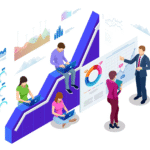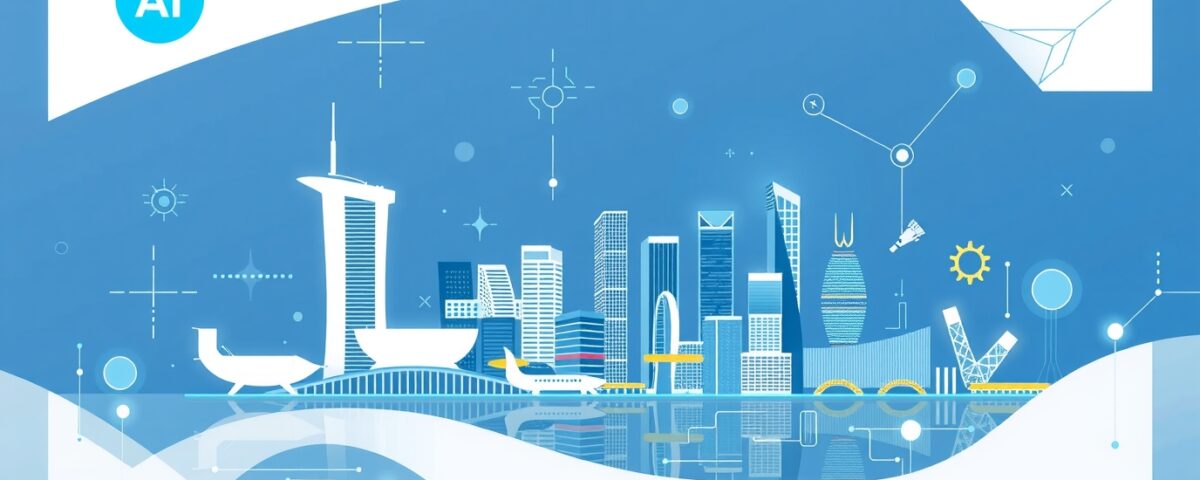
Lead Generation for Asia’s B2B Sector: Insights & Approaches
November 17, 2025
Singapore B2B Growth Hacks: What a Lead Generation Agency Really Does
November 18, 2025A New Digital Discipline Is Taking Shape
Singapore has always been a country that moves with intention—disciplined, ambitious, and unafraid of technological reinvention. Today, one shift is unmistakably clear: the rise of AI Content Generation. What began as an experimental tool has now become a staple across marketing, operations, and communication workflows.
This transformation didn’t happen by chance. The nation’s digital-first mindset, supported by efficient infrastructure and a culture that values productivity, created the perfect environment for AI Content Generation to thrive. Businesses that once took days to produce content now complete tasks in minutes—with sharper consistency and far greater scalability.
But beneath the convenience lies a deeper strategic shift. Content is no longer just words on a page. It’s data. It’s storytelling. It’s real-time communication. And AI Content Generation sits at the intersection where speed meets intelligence.
What makes this movement profound is not merely the technology—it’s how Singaporean businesses wield it. They use it not to cut corners, but to sharpen their performance. They don’t replace talent; they upgrade it. The result? A new kind of digital discipline where AI Content Generation becomes a strategic advantage in an increasingly noisy marketplace.
The quiet revolution has already begun. And the organizations that master this tool early will shape the language of Singapore’s digital future.

Understanding AI Content Generation: The Mechanics Behind the Momentum
At its core, AI Content Generation is the ability of advanced language systems to produce human-like written content. These systems analyze patterns, understand context, and generate responses that mirror tone, clarity, and structure. But what makes this technology so transformative is its precision—the ability to deliver consistency at scale.
Think of it this way: traditional writing depends on human bandwidth. AI removes that limitation. With AI Content Generation, businesses can produce blogs, emails, reports, product descriptions, campaign copy, and internal documentation without slowing down creative or operational momentum.
But while the technology is powerful, it isn’t mystical. AI predicts—humans direct. And when direction is clear, AI Content Generation becomes an asset that sharpens clarity, strengthens structure, and accelerates communication.
The gritty truth is this: AI doesn’t replace storytelling—it industrializes it. It handles the repetition so human minds can focus on insight, emotion, and originality. This synergy is what makes the rise of AI Content Generation not a trend, but a turning point.

Why Singapore Has Fully Embraced AI: The Pressure to Produce More, Faster
Singapore’s adoption of AI Content Generation reflects a deeper economic reality: speed is no longer optional. Consumers move fast. Platforms move faster. And brands must keep pace or be forgotten in the crowd.
Singapore’s business culture values precision, efficiency, and discipline—all traits reinforced by AI Content Generation. It allows companies to:
- Produce content at scale
- Maintain consistency across channels
- Support leaner teams without sacrificing output
- Respond quickly to market shifts
But more importantly, it aligns with Singapore’s pursuit of high-performance ecosystems. Whether in finance, tech, logistics, education, or retail, the pressure to communicate quickly and clearly has never been greater. AI Content Generation offers relief—and advantage.
In a small, intensely competitive market like Singapore, the ability to create more content with fewer delays isn’t just helpful—it’s survival.

How Singaporean Businesses Are Using AI Content Generation to Gain an Edge
Across industries, teams are incorporating AI Content Generation into daily workflows. Marketing teams use it for campaign ideation, social copies, blog content, landing pages, and email sequences. Corporate teams rely on it for HR guidelines, internal announcements, SOPs, and training documentation.
Even industries not known for creative output—manufacturing, engineering, logistics—use AI Content Generation to handle technical writing, reports, and standardized communication.
The result is a streamlined content ecosystem where human effort is focused on strategy and decision-making—not the grind of writing repetitive materials.
Businesses are also discovering an unexpected advantage: improved clarity. AI-driven content simplifies complex concepts, making communication sharper and more accessible. In a multicultural workforce like Singapore’s, this clarity is invaluable.
The companies adopting early aren’t just saving time—they’re building stronger operational foundations powered by consistent, controlled messaging.
The Benefits and the Reality Check: What AI Can—and Cannot—Do
There’s no denying the benefits of AI Content Generation. Faster output. Better structure. Lower costs. Higher consistency. But the gritty sage truth is worth stating plainly: AI is a tool—not a replacement.
It excels at structure, clarity, and efficiency. It struggles with emotional nuance, cultural sensitivity, and original creative leaps. That’s precisely why human oversight remains crucial. The power of AI Content Generation isn’t in replacing writers—it’s in elevating them.
AI handles the heavy lifting; humans refine the meaning.
The strongest businesses recognize that balance. They don’t hand over creativity—they reinforce it with technology that multiplies impact without diluting authenticity.

The Future of Content in Singapore: Intelligent, Fast, and Hyper-Adaptive
Singapore’s next chapter in digital communication will be defined by adaptability. As businesses tighten workflows and accelerate production cycles, AI Content Generation will evolve from optional asset to structural necessity.
Expect content systems that adjust tone automatically. Expect internal platforms that generate documentation instantly. Expect marketing pipelines that refresh daily based on performance data.
What’s coming isn’t just automation. It’s intelligent personalization at scale—content that adapts to industries, markets, and customer behaviors in real time.
But one thing will remain constant: the value of human direction. The future belongs to teams who understand how to command the machine, not surrender to it.
Conclusion: The New Standard for Singapore’s Digital Future
Singapore’s adoption of AI Content Generation marks a decisive shift toward intelligent creativity. It isn’t hype, trend, or novelty—it’s infrastructure for the next era of communication.
The companies that leverage it wisely will build stronger brands, sharper processes, and more resilient teams. Those who resist it will find themselves slower, louder, and less relevant in a landscape that rewards precision and speed.
This is Singapore’s new digital standard. And the change has already begun.


